Weedicides are chemicals that are sprayed on crop fields to remove weeds. A farmer wanted to test the effect of two different weedicides on wheat production. He sprayed each weedicide on two different fields. No weedicide was sprayed on field 3.
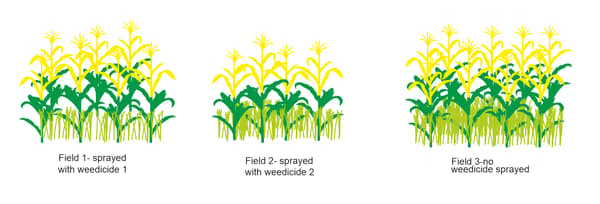
Why did the farmer not spray any weedicide on Field 3?


Important Questions on Crop Production and Management
Weedicides are chemicals that are sprayed on crop fields to remove weeds. A farmer wanted to test the effect of two different weedicides on wheat production. He sprayed each weedicide on two different fields. No weedicide was sprayed on field 3.
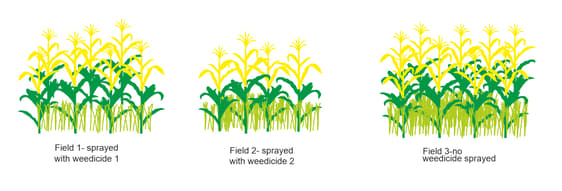
The graph shows the production of wheat crop from each field over two years.

What can the farmer conclude from his tests?
Weedicides are chemicals that are sprayed on crop fields to remove weeds. A farmer wanted to test the effect of two different weedicides on wheat production. He sprayed each weedicide on two different fields. No weedicide was sprayed on field 3.
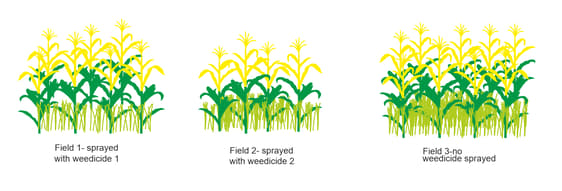
The graph shows the production of wheat crop from each field over two years.

The farmer’s friend suggested that the farmer should have tested Weedicide 1 on wheat field and Weedicide 2 on mustard field. Will this suggestion help improve the experiment? Explain your answer.
A farmer wants to grow crops in his field between the months of June and July. The chart below shows a list of crops and different agricultural practices.
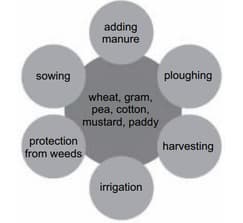
Select two crops from the list that grow best during June and July.
The farmer prepared the soil in his field by turning and loosening the soil.
How does turning and loosening the soil help in growing plants?
The chart below shows a list of crops and different agricultural practices.
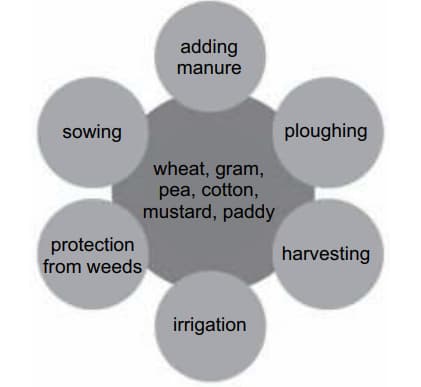
Farmers follow a sequence of agricultural practices to grow crops. A part of the sequence is shown below. Choose an appropriate agricultural practice from the chart above to fill in the box.

Soham investigates the water holding capacity of four different types of soils. He sets up an experiment for each type of soil as shown in the diagram. Soham records his observation in a table.
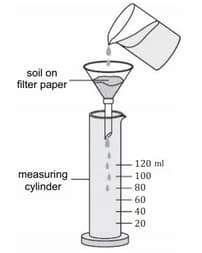
| Soil type | ||||
| Clay | Loam | Sand | Silt | |
| Amount of water added to the soil (ml) |
||||
| Amount of water collected in the measuring cylinder (ml) |
||||
Which type of soil absorbs the most water?
Soham investigates the water holding capacity of four different types of soils. He sets up an experiment for each type of soil as shown in the diagram. Soham records his observation in a table.
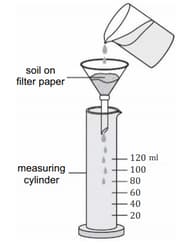
| Soil type | ||||
| Clay | Loam | Sand | Silt | |
| Amount of water added to the soil (ml) |
||||
| Amount of water collected in the measuring cylinder (ml) |
||||
Soham added the same amount of water to each type of soil. State one more thing that Soham needs to keep the same in his experiment.
